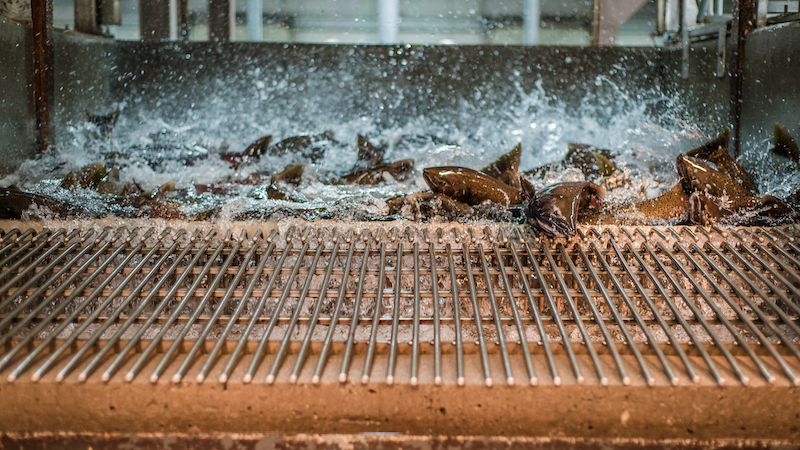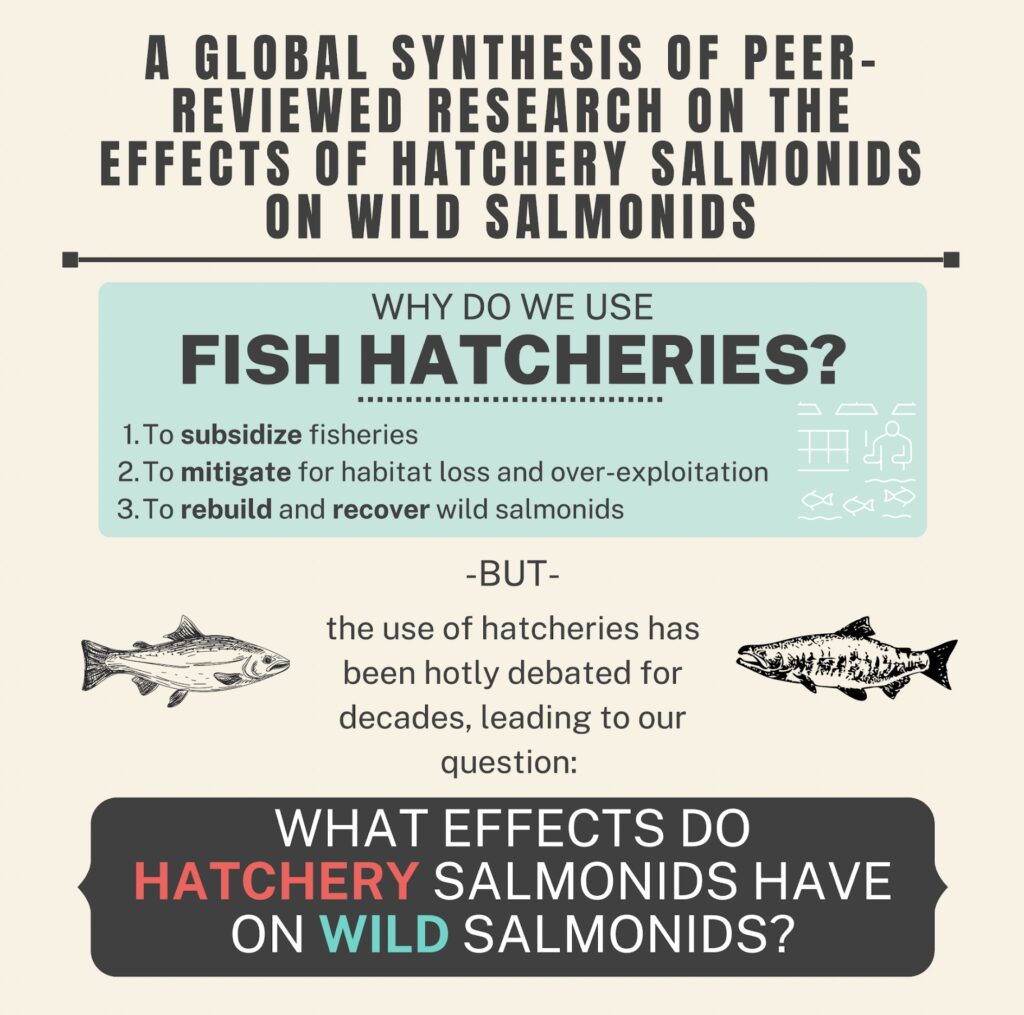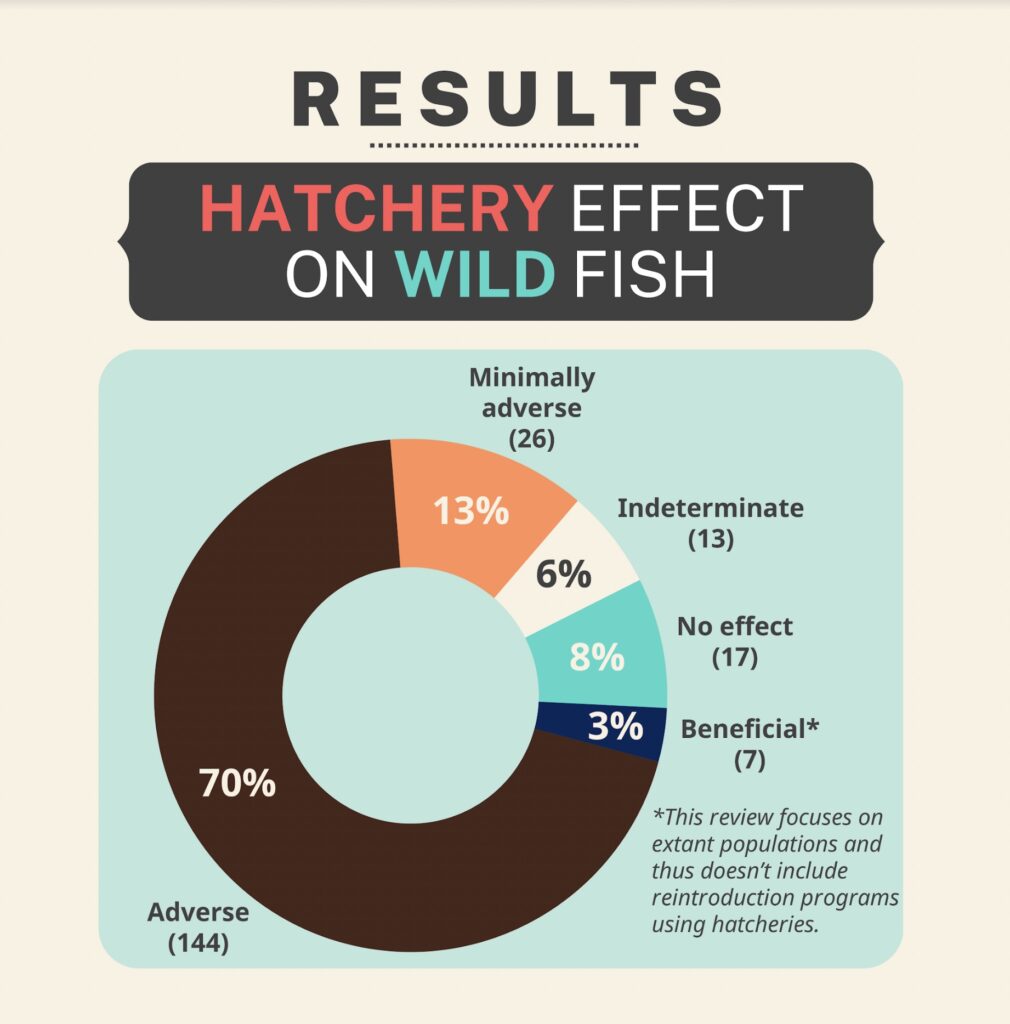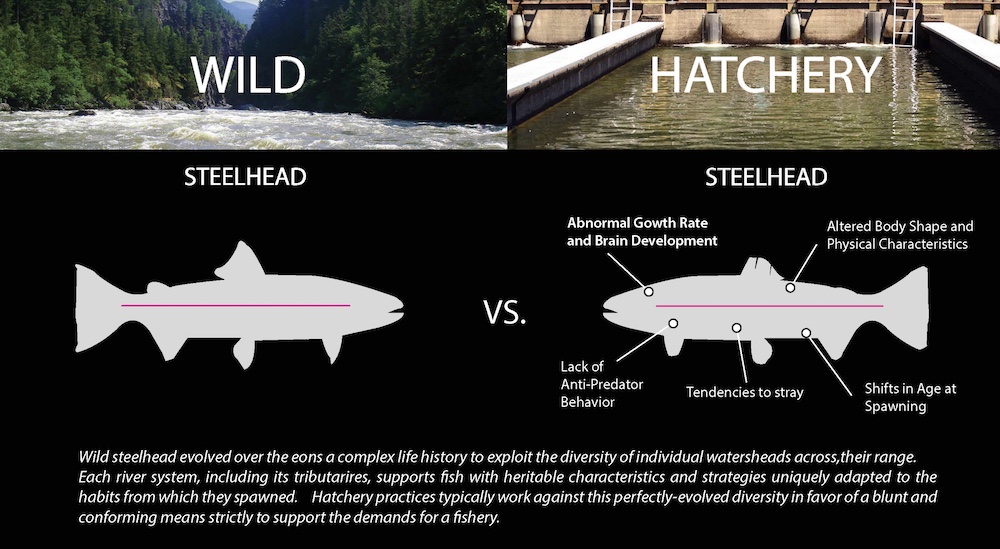
Hint: They don’t co-exist
The debate around the efficacy and impact of fish hatcheries has been ongoing for decades. On the one hand, hatcheries have played a role in commercial, subsistence, and recreational fisheries. On the other, there’s growing concern about their impact on wild fish populations.
Established worldwide, hatcheries have aimed to mitigate habitat loss, counteract overfishing, and rejuvenate dwindling wild salmonid populations. While there are reputed benefits, such as replenishing fisheries that vanished due to dam constructions and habitat degradation, hatcheries also have a darker side. They’ve been linked to genetic impacts, reducing fitness and diversity among wild salmonid populations. Ecological effects that lead to increased predation, resource competition, and heightened susceptibility to diseases. And documented lower survival rates, with hatchery fish being less resilient in natural environments than their wild counterparts.

Thanks to a recently published literature review led by Trout Unlimited, with financial support from the Wild Steelhead Coalition and others, we now have comprehensive data that shines more light on this issue.
This review is not just another study. It’s a culmination of four years of dedicated work initiated by fisheries scientist John McMillan during his tenure as the Science Director for Trout Unlimited’s Wild Steelheaders United initiative and Dr. Helen Neville, TU’s senior scientist.
Building on the groundwork by fisheries biologist Brian Morrison, McMillan, and Neville assembled a team of American and Canadian fisheries scientists. This team sifted through over 50 years of peer-reviewed scientific literature to understand the real impact of hatcheries on wild salmonid populations. Their findings? A staggering 80% of global, peer-reviewed research points to adverse effects on wild salmonids in freshwater and marine ecosystems.

Their publication, “A Global Synthesis of Peer-Reviewed Research on the Effects of Hatchery Salmonids on Wild Salmonids,” offers an exhaustive look at these findings. Published in the peer-reviewed journal Fisheries Management and Ecology, the paper is a resource for anyone interested in this critical debate. Moreover, Trout Unlimited has made this resource publicly available, ensuring the data is accessible to decision-makers, resource managers, and the public.
This published review confirms that the vast body of science shows hatchery practices are concerning and, at best, checkered but mostly detrimental to wild populations of salmonids. What is also recognized in the paper’s conclusions is the distorting effects of artificial propagation on salmonid genetics, mainly where the impact of artificial propagation is now seen more clearly with the advance of molecular science.

Accordingly, we must now also consider epigenetic programming and inheritance effects from artificial propagation. Epigenetic effects are alterations in how an animal’s genes are expressed in response to its environment. For steelhead spawned and reared in the domesticated hatchery setting, these changes include shifts in age at spawning, body shape, and physical characteristics, abnormal growth rate, brain development, lack of anti-predator behavior, and tendencies to stray, among others. Unfortunately, these distorted traits can be passed on, even to wild steelhead, which manifests in reduced fitness and poor survival of offspring.

There has been a mixed bag of sustained faith and utter damnation regarding hatcheries. While hatcheries have offered short-term solutions to some of the challenges fisheries face, the potential longer-term harm they pose to wild populations is now undeniable. Research must continue to guide our decisions. As stakeholders in this ecosystem, it’s our shared responsibility to take informed actions that ensure the prosperity of wild steelhead populations.





